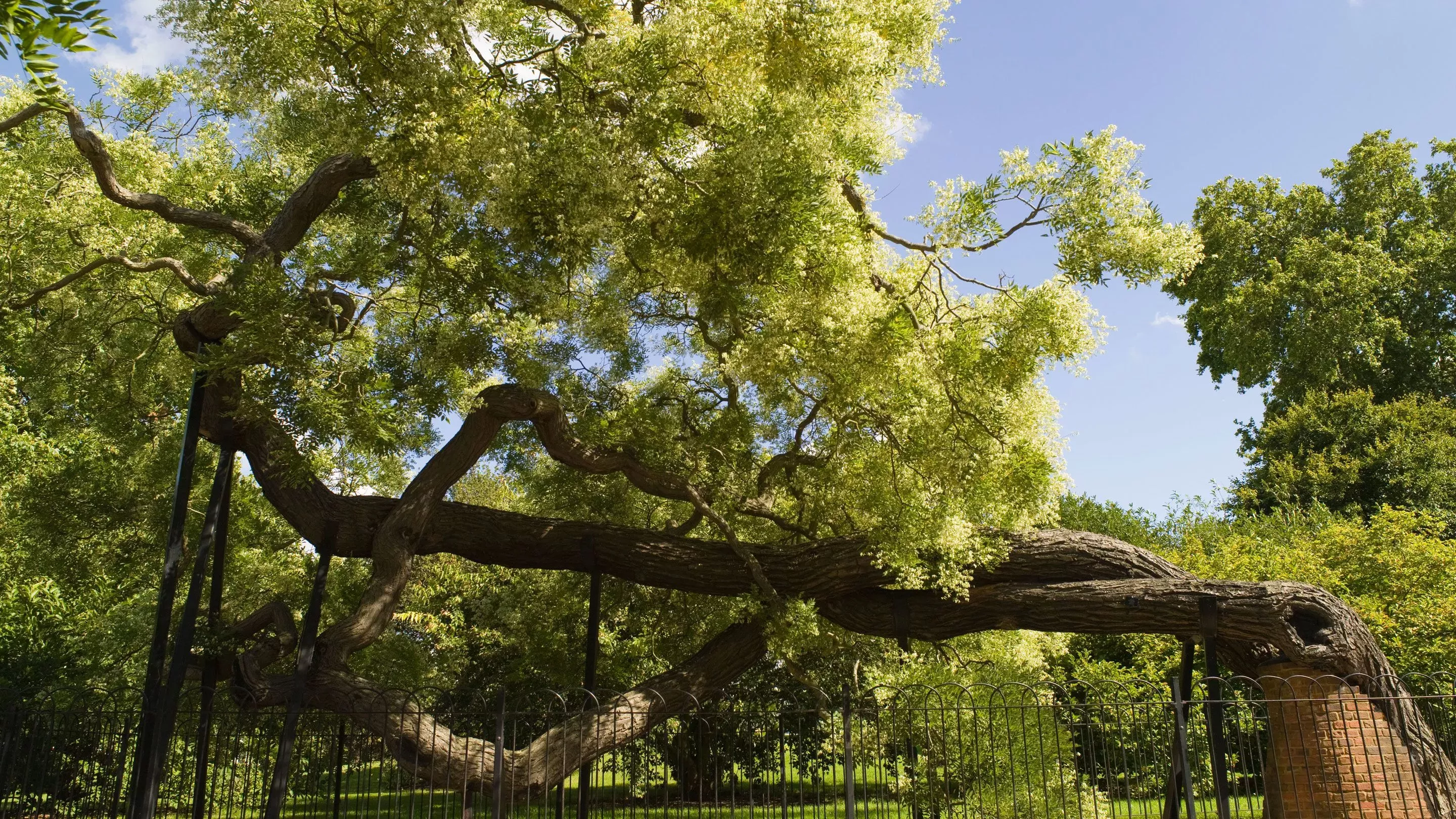8 July 2020
Travel Asia at Kew
Be transported to far-flung places by visiting our stunning Asian plants, architecture, and landscapes.

Travel plans may be out the window for many this year but here at Kew we’ve got a great alternative.
Let our global botanic collections transport you to different places all over the world.
Here are the top spots in our Gardens to experience the sights, smells, and spirit of Asia, the largest continent in the world that spans from Turkey to Indonesia to Japan.
Visit China
Admire our iconic and recently restored Great Pagoda that towers above the Gardens, reaching 50 metres in height.
This tiered Chinese building was designed for Kew by Sir William Chambers and completed in 1762. The architect was inspired by his travels across China and the beautiful gardens and architecture he saw.
Did you know? Pagodas should have an odd number of floors, traditionally seven. This is believed to represent the seven steps to heaven. Ours breaks that rule as it has 10.
Brightly coloured dragons adorn the painted green and white structure, becoming smaller as they ascend the 10 floors of the building. How many can you spot on your next visit?


Continue your tour of China by exploring our Chinese Grove where you’ll discover plant specimens collected in the country’s Sichuan Province (the home of giant pandas).
Step inside the Temperate House and Woodland Glade to spot our tea plants (Camellia sinensis).
A cup of tea is a quintessentially British tradition, but the tea plant is native to China, where there are 112 cultivated varieties.
Another iconic plant that originated in China is one of the best-loved flowers in the world. Roses were originally cultivated in China, which inspired breeders in the 19th century to deliberately cross species to make an abundance of varieties.
Visit our blooming Rose Garden with its intoxicating mix of colour and scent.

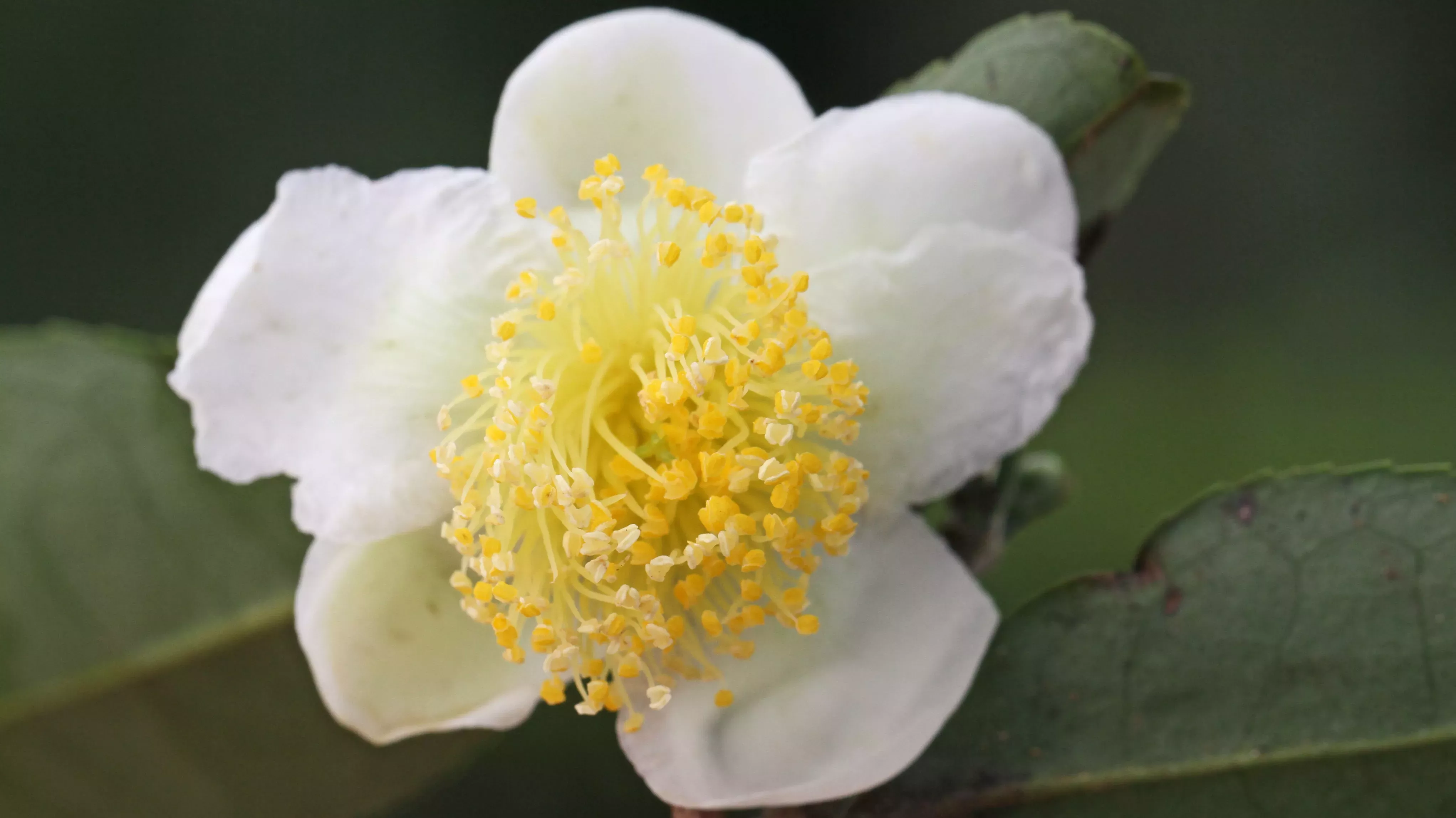

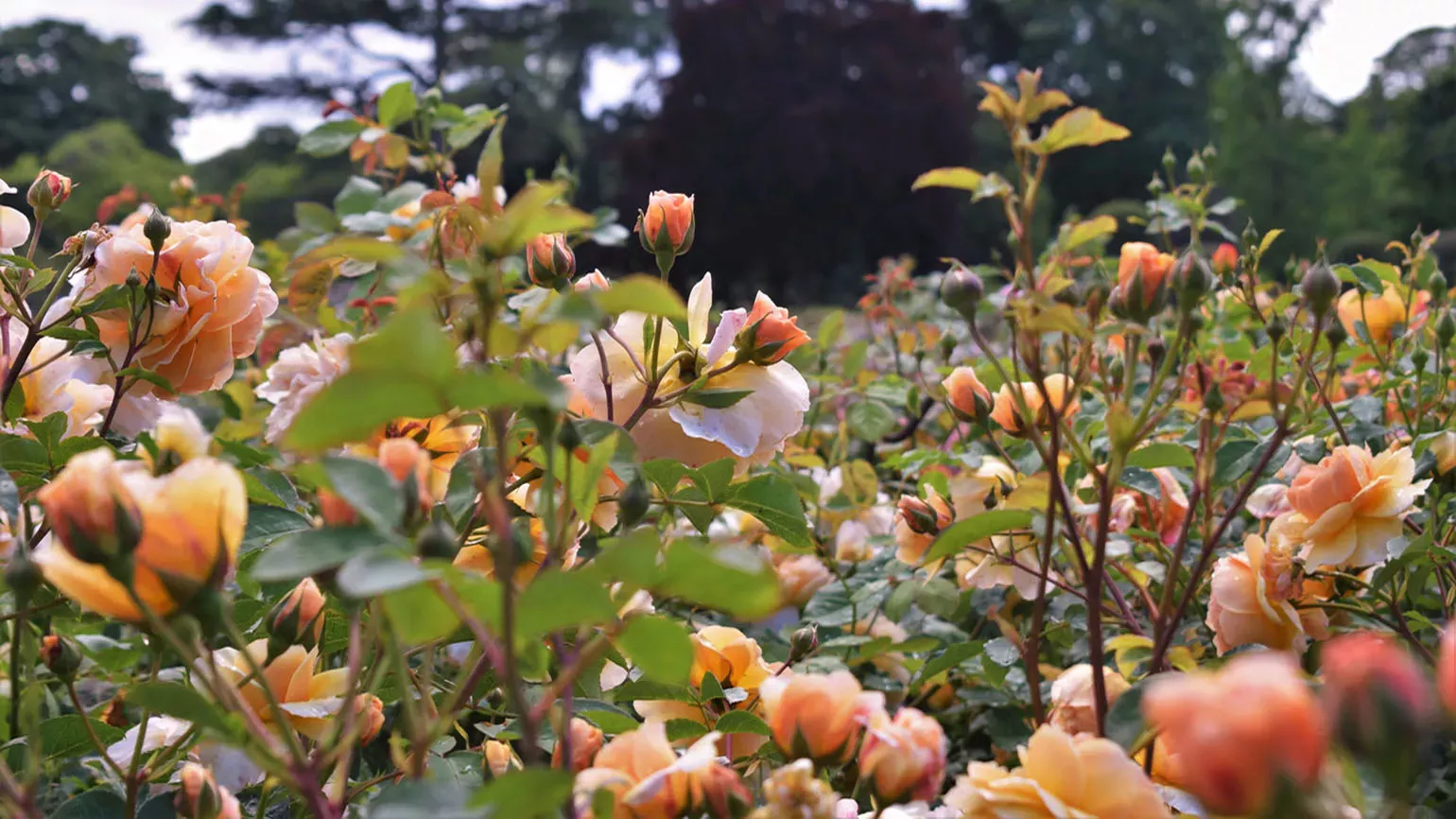
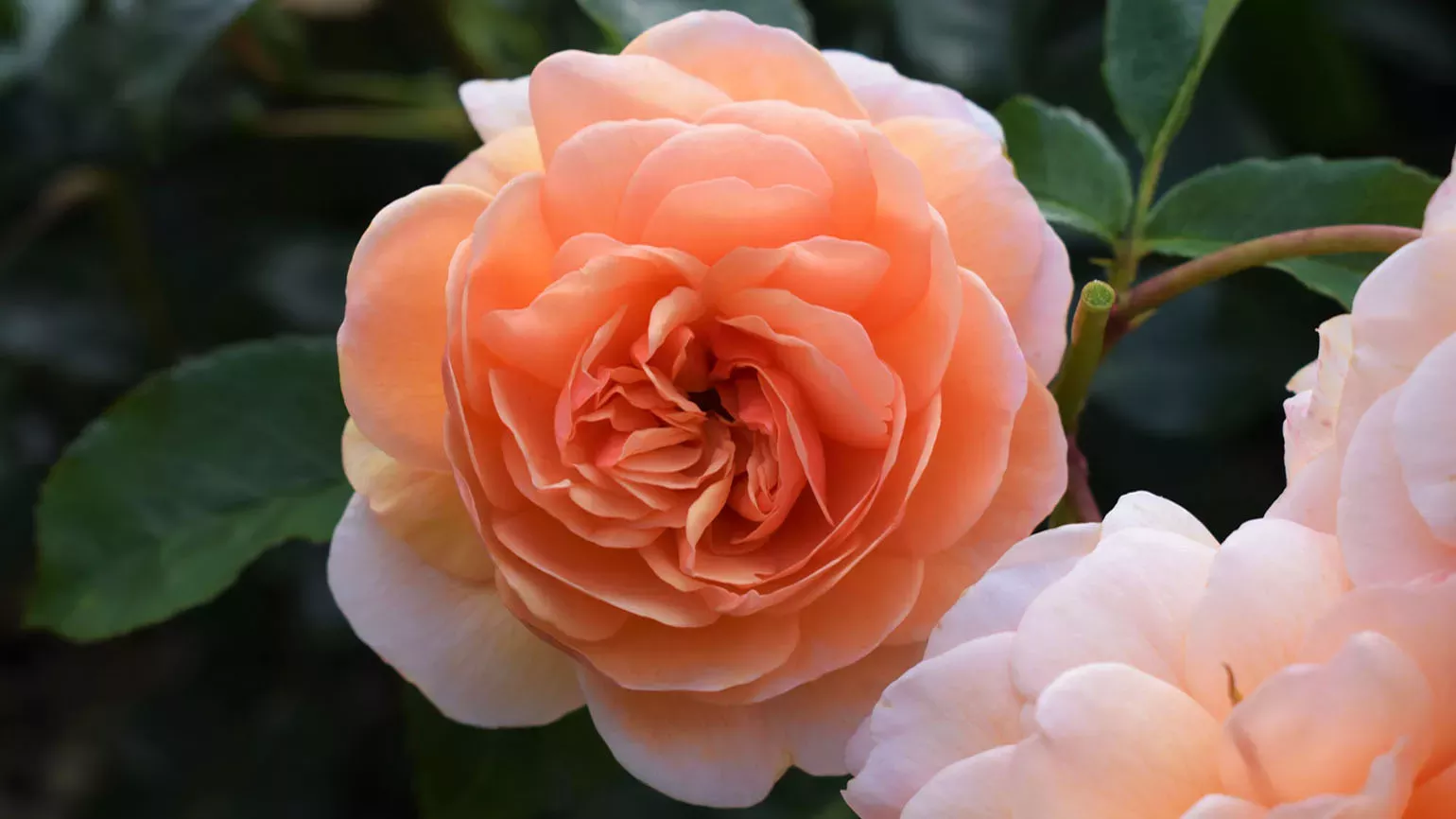
Visit Japan
Be whisked away to Japan by taking a stroll around our Japanese Landscape.
Uniting a Garden of Peace, Harmony and Activity, our manicured landscape represents a traditional Japanese tea garden, Japan’s mountain regions and elements of the natural world.
The tranquil garden’s raked gravel and large pebbles symbolise the movement and ripples of water.
Did you know? Around 17 tonnes of gravel were used to complete the landscape – that's about the same weight as three African elephants!
Watch the film below to see how our botanical horticulturists rake the gravel into patterns…
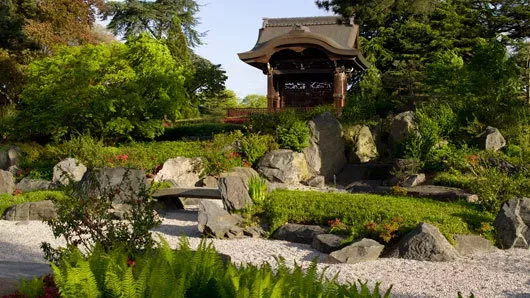
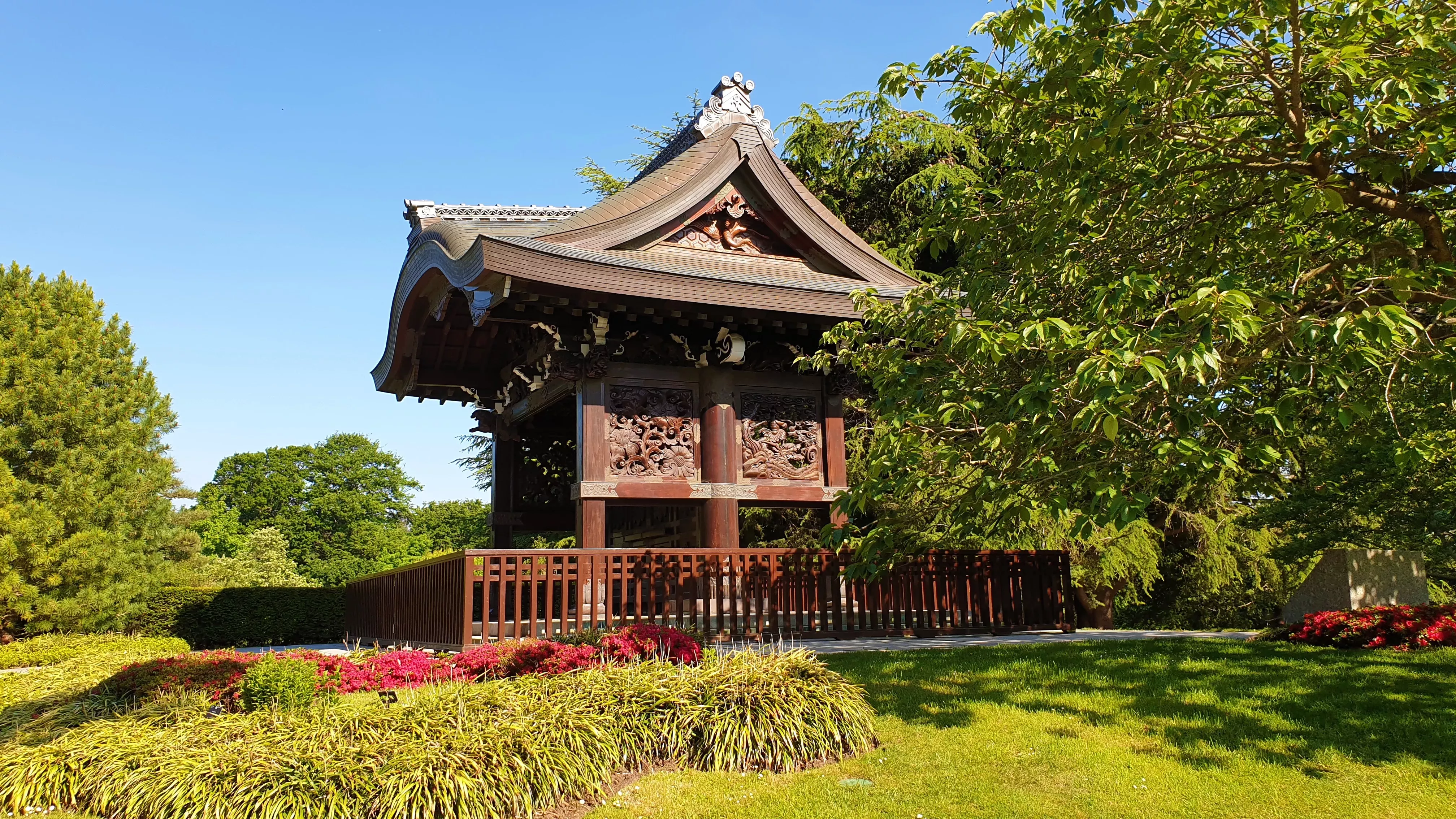
In the middle of the garden stands our magnificent ‘Chokushi-Mon’, or ‘Gateway of the Imperial Messenger’, gifted to Kew in 1910 after its inclusion in London’s Japan-British Exhibition.
Discover more secrets of our Japanese Landscape.
For another taste of Japan, head to our beautiful Bonsai House, which showcases the Japanese art of growing miniature trees in containers. We have around 60 tiny bonsai trees here, the smallest only 10 centimetres tall.
Keep your eyes peeled for our stunning Japanese white pine bonsai (Pinus parviflora), which is thought to be over 75 years old.
Not quite finished with your Japanese travels? Then visit our Bamboo Garden. Hidden among the thicket of tall grasses is Minka House, a picturesque small building in the style of a traditional Japanese farmhouse.
‘Minka’ means ‘house of the people’ denoting the simple homes of country-dwellers common in Japan until the mid-20th century.
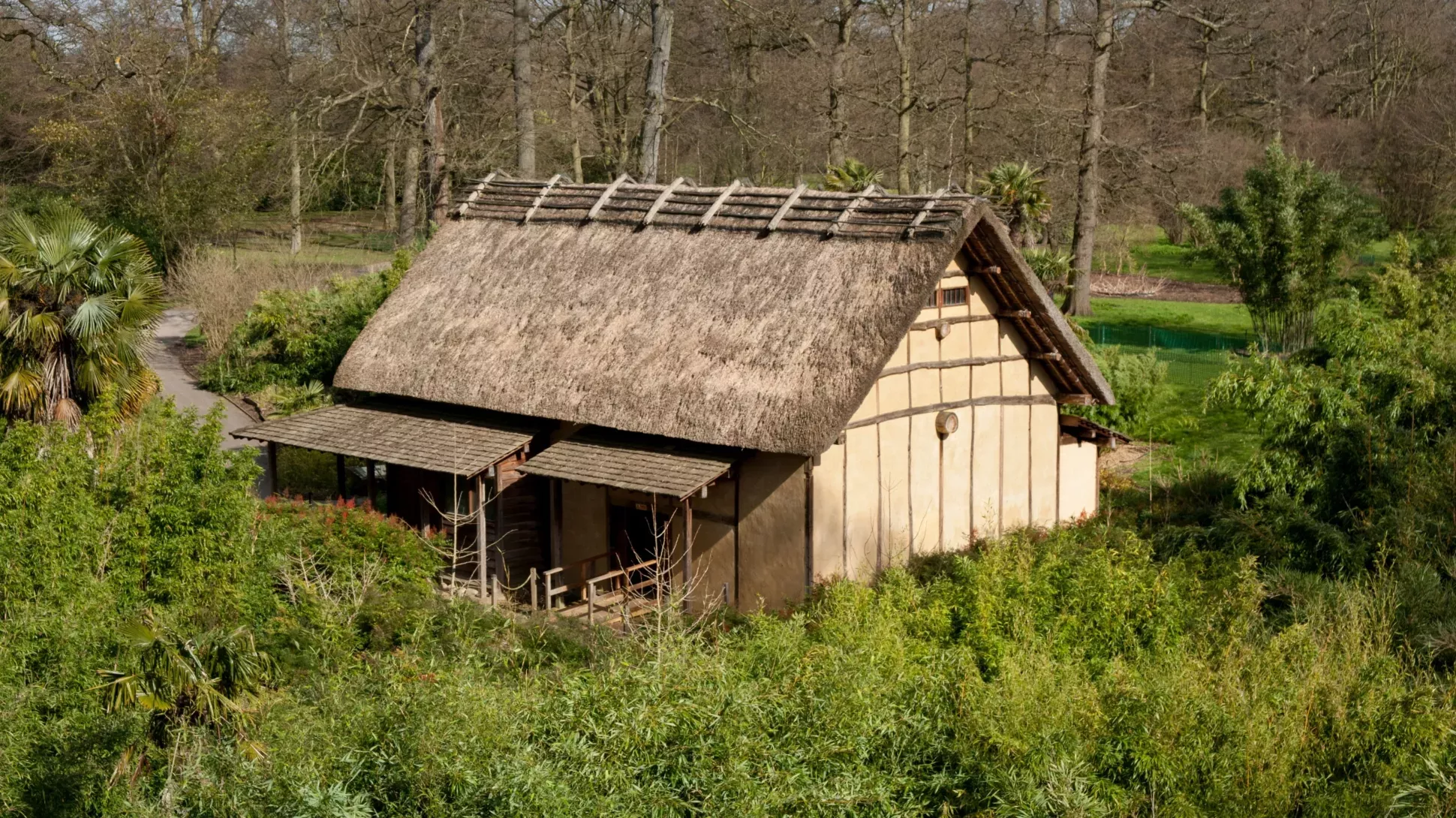
Visit other parts of Asia
Travel the Himalayas without the mountainous climb in our colourful Rhododendron Dell.
Sir Joseph Hooker, Kew's second Director, brought back many new specimens of the genus from his travels to the Himalayas in the mid-19th century.
In our Rock Garden, wild-collected flora from Himalayan mountain streams and meadows is displayed in our Asia zone.
Visit our Waterlily House to see the national flower of India, the sacred lotus (Nelumbo nucifera).
It's hard to miss with its eye-catching, showy flowers. This aquatic plant has been celebrated for thousands of years as a symbol of beauty, purity and divinity in Hinduism and Buddhism.
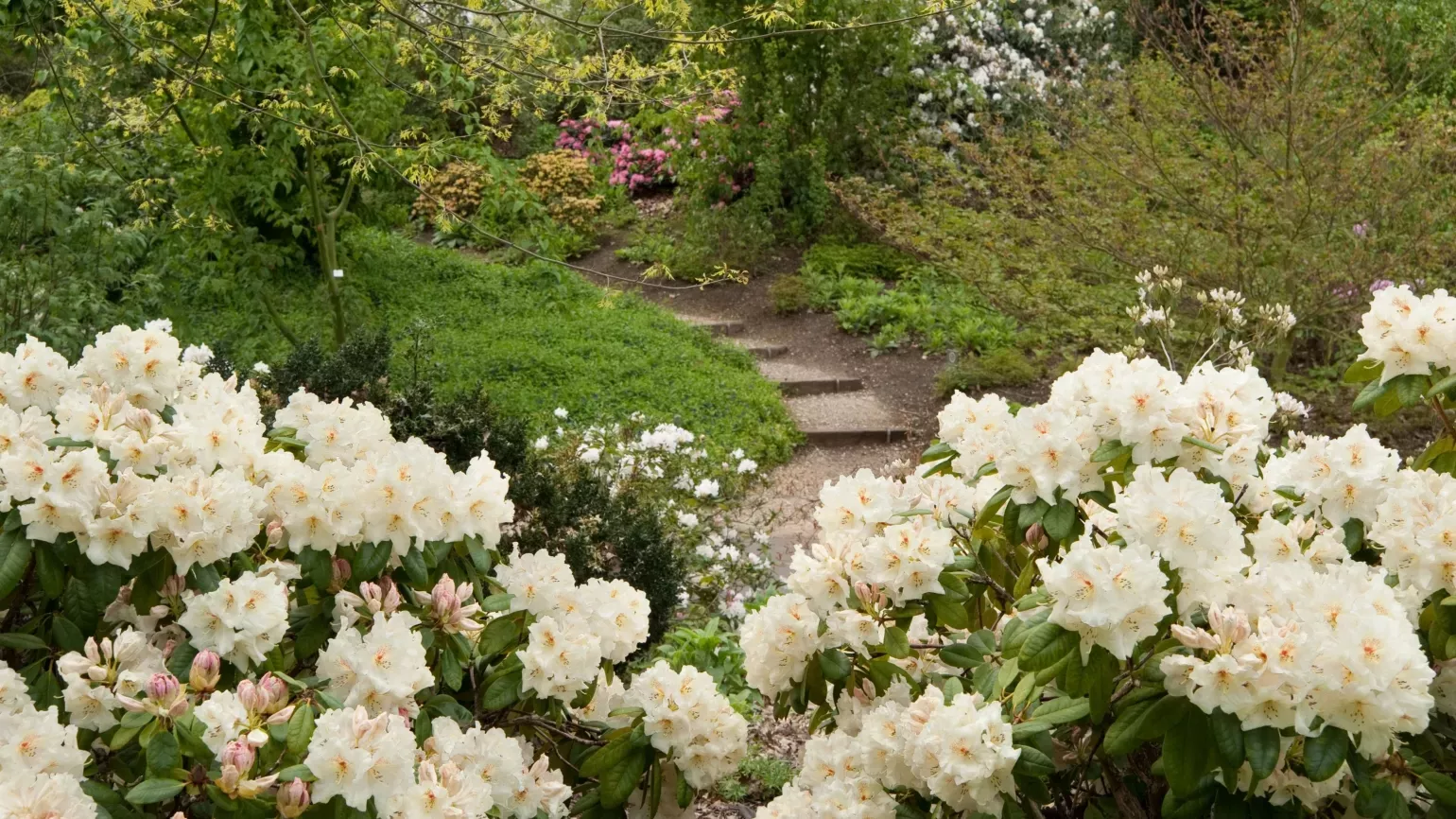
Reconnect with nature by admiring our trees of Asia.
Dotted across our 320-acre Gardens, some of the highlights include our ancient maidenhair tree (Ginkgo biloba) and Japanese pagoda tree (Styphnolobium japonicum) growing near The Hive, both native to China (despite the latter’s name).
Other notable specimens include our Chinese wisteria (Wisteria sinensis), Japanese cherry (Prunus serrulata) and Japanese cedar (Cryptomeria japonica).
So, come to Kew and let our Gardens take you on a magical botanic journey to Asia.
